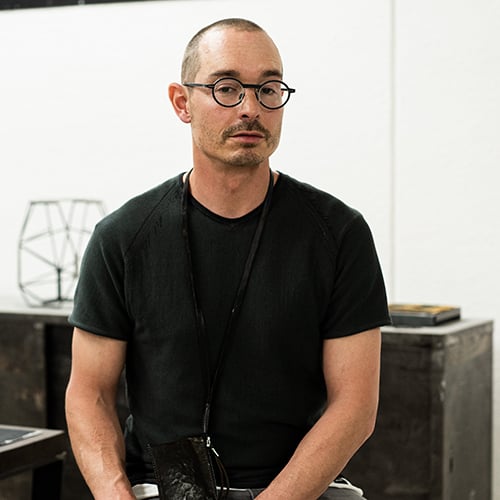
Hapter is focused on extending the life cycle of materials.
In an age where resources are scarce, Hapter (one of the most original state-of-the-art eyewear manufacturers) supports the philosophy of preserving and optimising existing materials. We find out how from the company founder and CEO, Eric Balzan.
When and how did you start to focus on sustainability?
The French philosopher Bernard de Chartres said that “we are like dwarves standing on the shoulders of giants”; meaning that we can see more than them and further than them, not because we are taller or with better eyesight, but because we are lifted and carried by giants.
We apply the same intellectual approach to design and eyewear manufacturing: having gained our experience in large-scale industrial contexts, on the shoulders of these giants we have had the opportunity to see far into the future.
And we have seen a different future, where resources are scarce or more precious, both in terms of materials and artisan skills, but the demand for unique quality items is clearly destined to grow even stronger.
And so we researched and invented an alternative production method for eyewear. When Hapter was set up, when the need emerged to display our inspiration and creativity, we did not choose to stand on these “giants” to produce our work; instead we rethought the design and production of our glasses, making our company completely sustainable and autonomous.
To do so, we had to ration our resources, invent environment-friendly technologies where the technique, ingenuity and quality of materials were placed forefront, ahead of industrial machinery.
We can probably define ourselves as “sustainable natives”; in other words, we do this not by desire or necessity but simply because we live in an era of scarce resources where those that exist need to be preserved and used to their full potential.
From the point of view of sustainability in the strictest sense, our eyewear is produced from a single block of material that already has the quality required of the finished product. This material is then cut into the shape of glasses, using technology that preserves the quality of the material. The glasses are then extrapolated and given a 3D form. There are no intermediary steps that cause irretrievable shrinkage, we do not use solvents or lubricants, not even industrial washing machines.
This is why we have a ‘workshop’ and not a ‘factory’: a clean and rigorous environment, where ‘clean’ technologies work together without soiling the product.
How do you combine avant-garde production with eco-sustainability?
Our principle is simple: regardless of the cost of the product, we believe that a customer should not pay for technical and production inefficiency on the part of the manufacturer.
Our idea is to create a design product where the values and performance are decidedly higher than those of classic industrial products, offering them at the right price, meaning the customer pays for that product. Customers must pay for innovation, ingenuity, inspiration and quality materials.
In our own small way, we have created a manufacturing island where we idealise the role of ingenuity and craftsmanship, thanks to which we have the goal of creating products in a totally sustainable way, in contexts of micro-manufacturing which can also be used in very tricky environmental contexts: the top of a mountain or the centre of a city.
How can this ‘green’ process be applied to products?
Our product is designed with an eye to production, and viceversa. This is because our product is exclusive and our manufacturing exclusively serves our product.
Among other things, we have received a patent for the process which underpins our entire manufacturing system, and this is linked to a design concept which also is part of the patent.
We choose materials on the basis of aesthetics and the dynamics that we wish the product to have, not viceversa as generally happens.
Will the future of Hapter lie in sustainability?
Of course, it’s already traced out. But this does not simply mean using “sustainable” materials: acetate, for example, absolutely cannot be considered in any way a “sustainable” material in itself. Neither can the steel we use, which is produced in steelworks: but it is the way in which the material is used that can be more or less sustainable. The fact that manufacturing scraps can be re-used to create new steel for other items, thus potentially extending the life cycle of materials in an infinite manner.
For example, our glasses are created from a sheet of steel residue + polymeric material, like rubber. The scrap material that remains after the glasses shape has been cut out is collected by a local recycling company, which reshapes the material in melting furnaces, producing both new steel and rubber granules destined to other production plants.